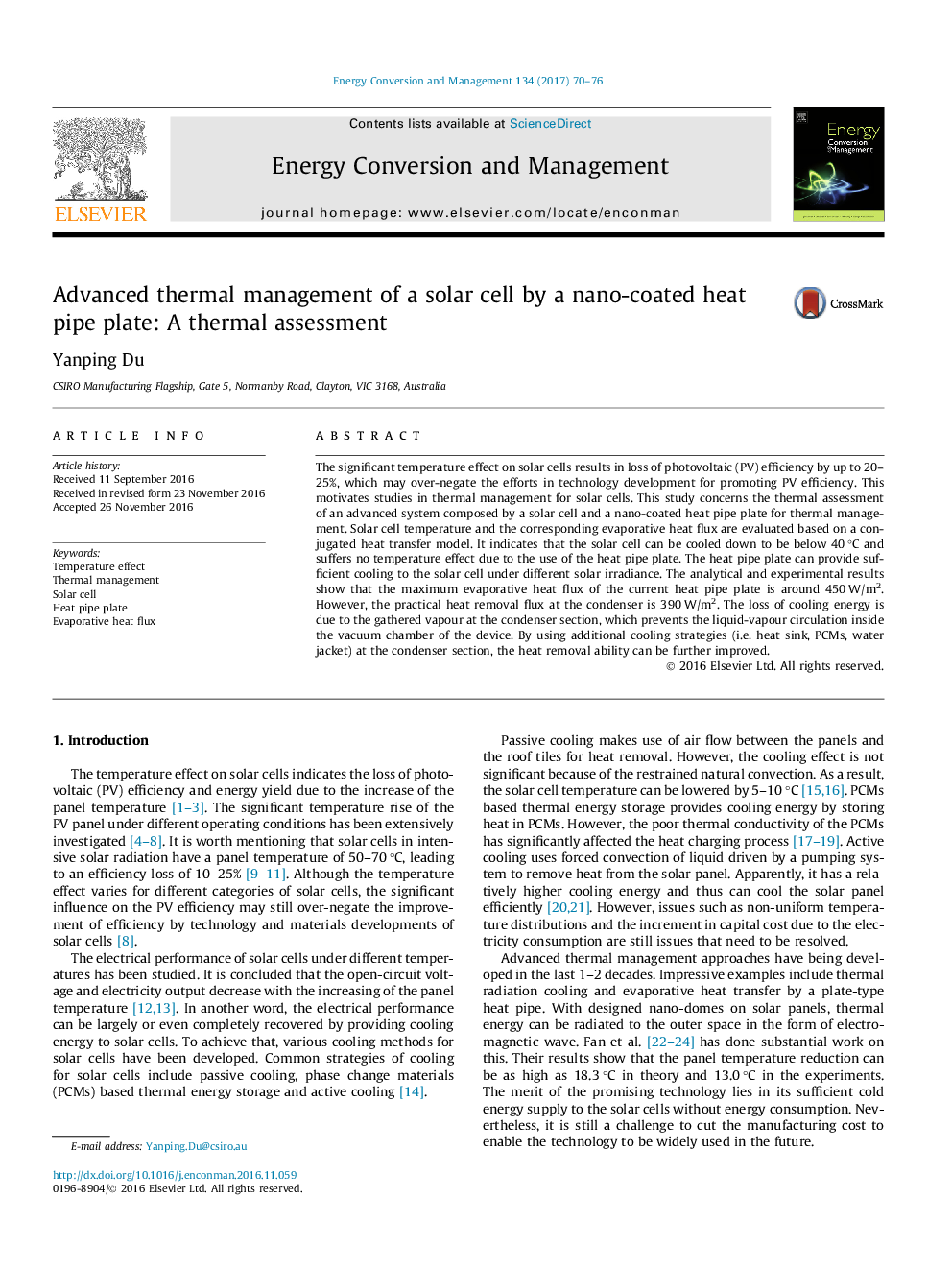| Article ID | Journal | Published Year | Pages | File Type |
|---|---|---|---|---|
| 5013045 | Energy Conversion and Management | 2017 | 7 Pages |
Abstract
The significant temperature effect on solar cells results in loss of photovoltaic (PV) efficiency by up to 20-25%, which may over-negate the efforts in technology development for promoting PV efficiency. This motivates studies in thermal management for solar cells. This study concerns the thermal assessment of an advanced system composed by a solar cell and a nano-coated heat pipe plate for thermal management. Solar cell temperature and the corresponding evaporative heat flux are evaluated based on a conjugated heat transfer model. It indicates that the solar cell can be cooled down to be below 40 °C and suffers no temperature effect due to the use of the heat pipe plate. The heat pipe plate can provide sufficient cooling to the solar cell under different solar irradiance. The analytical and experimental results show that the maximum evaporative heat flux of the current heat pipe plate is around 450 W/m2. However, the practical heat removal flux at the condenser is 390 W/m2. The loss of cooling energy is due to the gathered vapour at the condenser section, which prevents the liquid-vapour circulation inside the vacuum chamber of the device. By using additional cooling strategies (i.e. heat sink, PCMs, water jacket) at the condenser section, the heat removal ability can be further improved.
Related Topics
Physical Sciences and Engineering
Energy
Energy (General)
Authors
Yanping Du,
